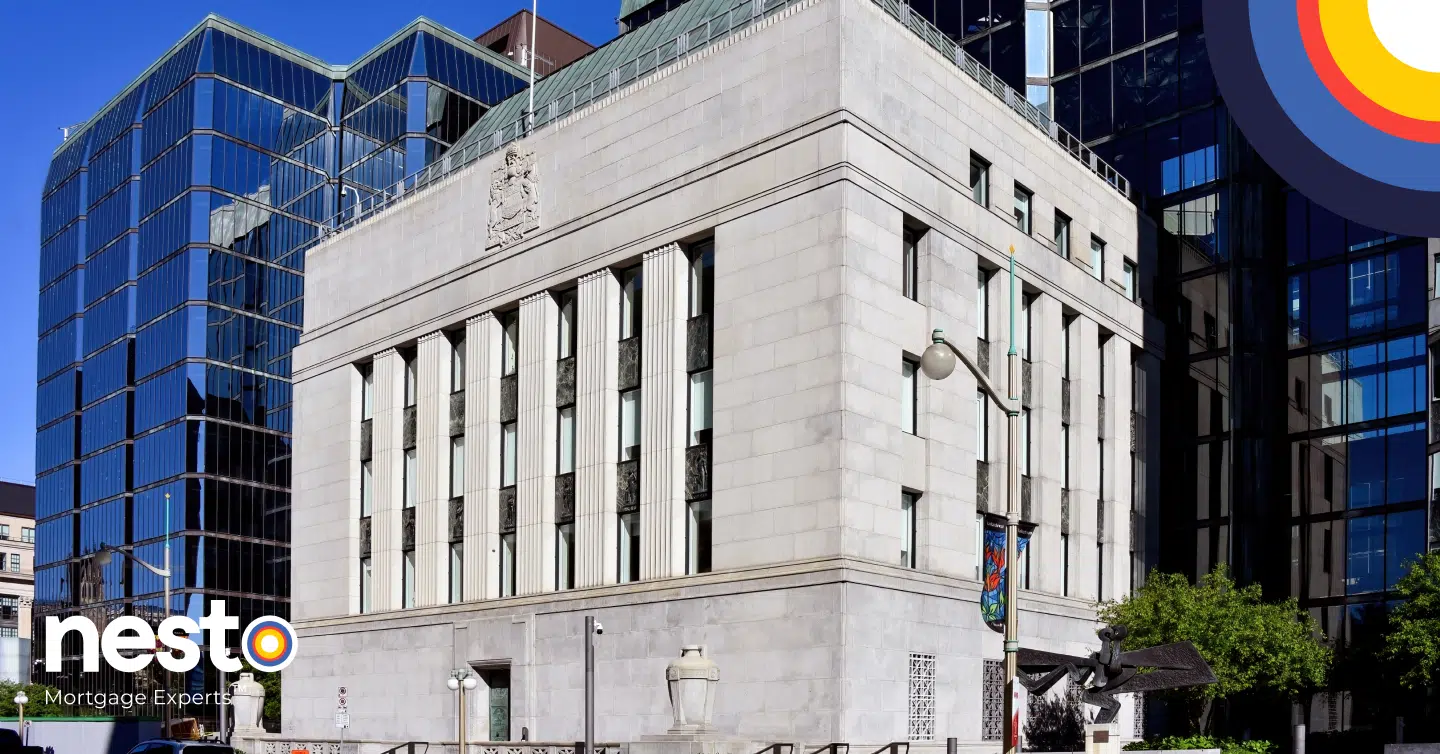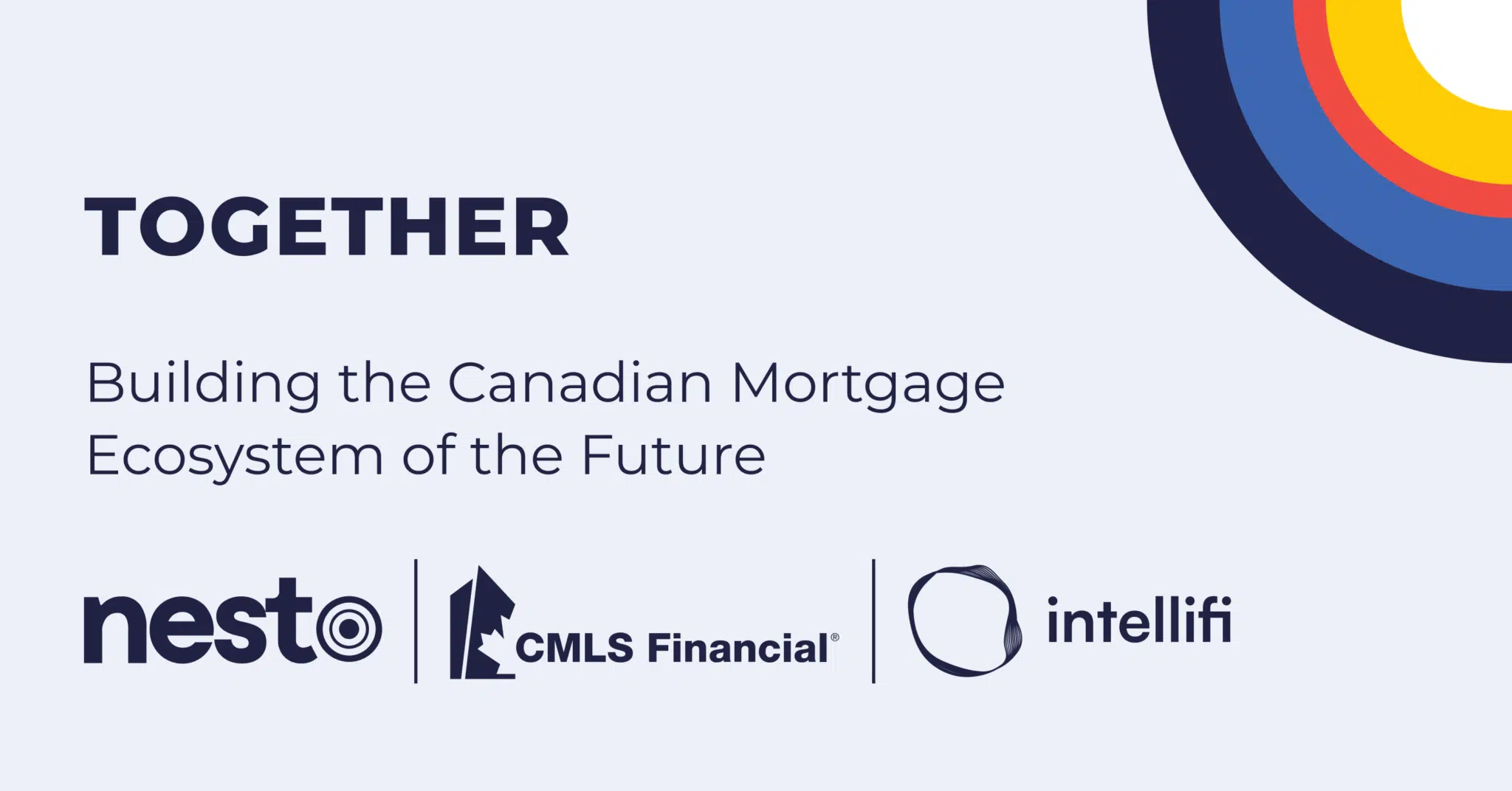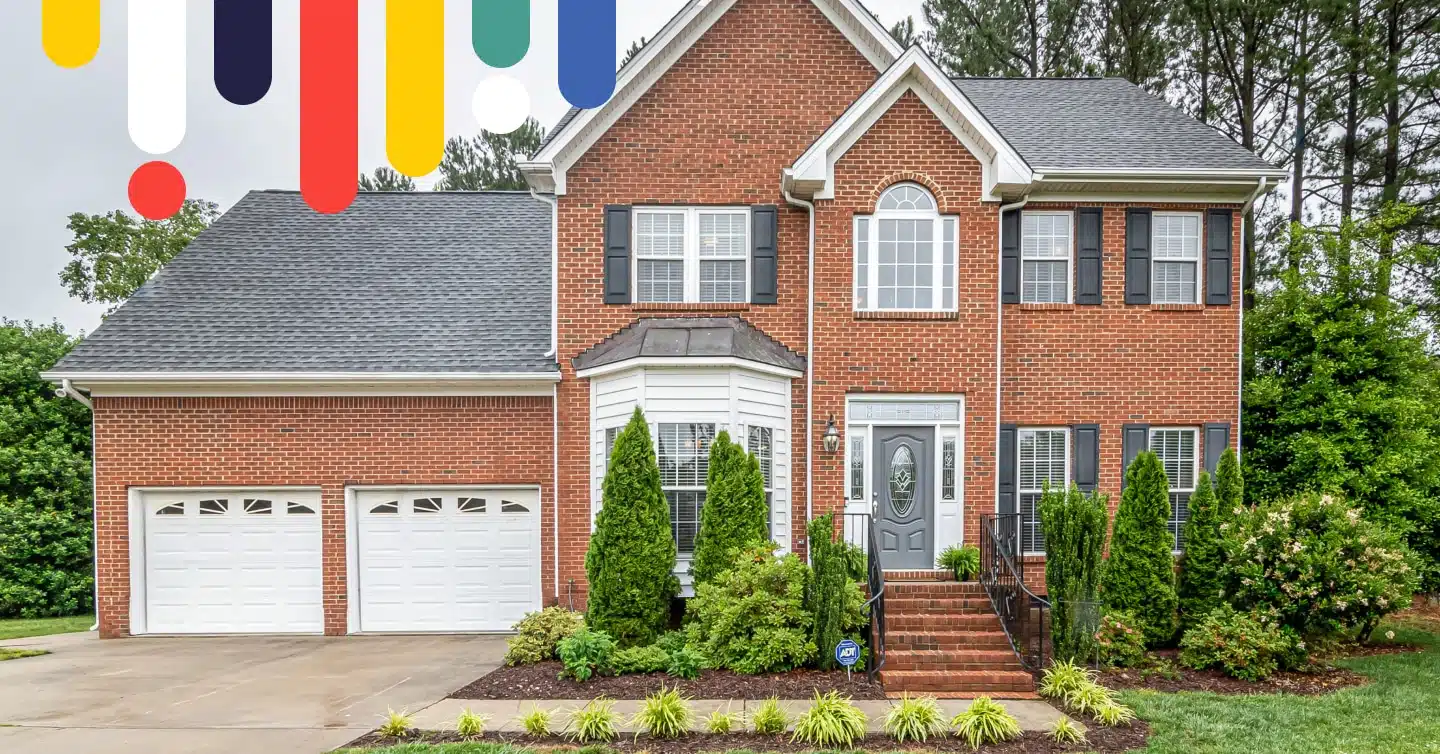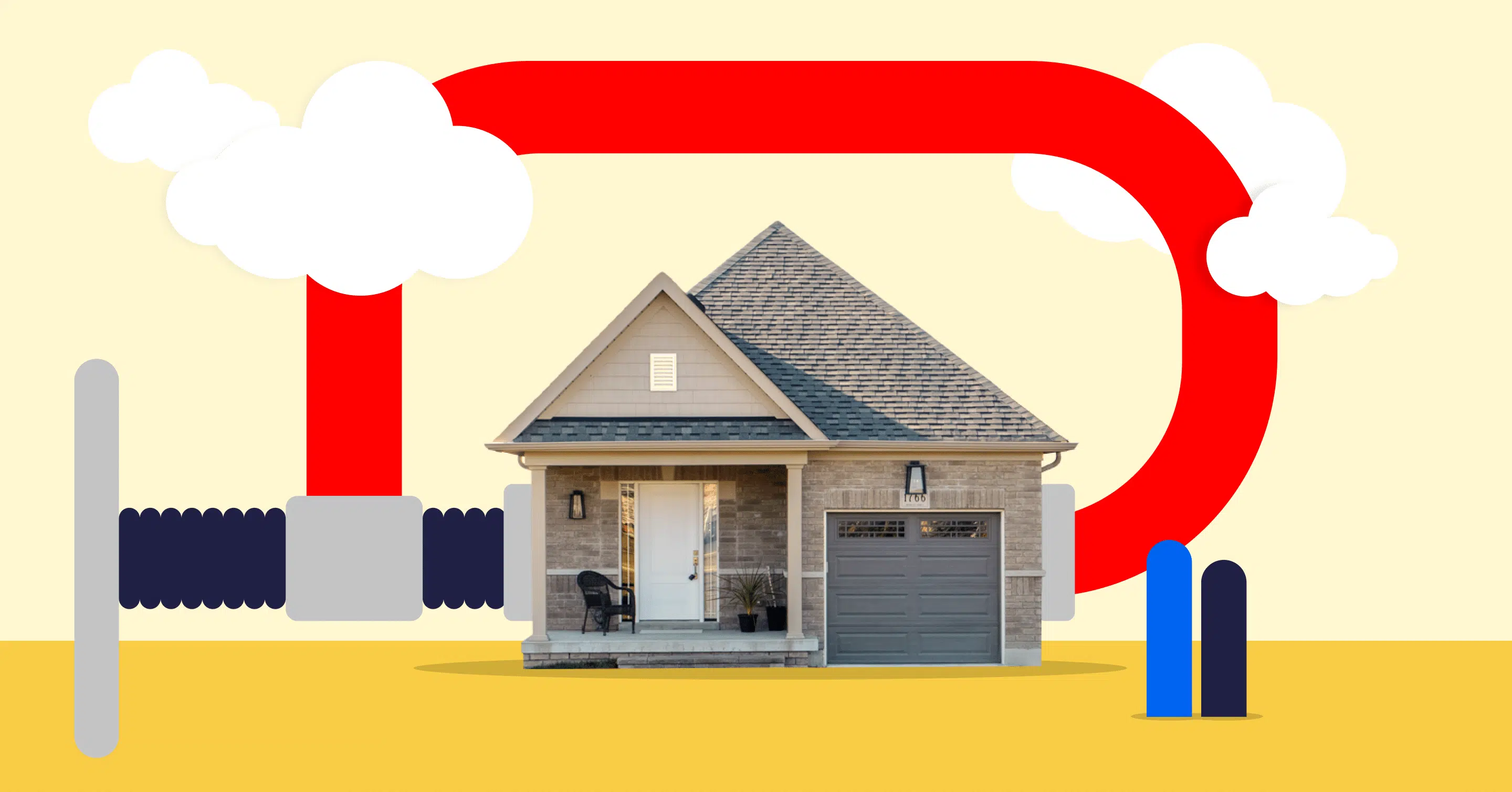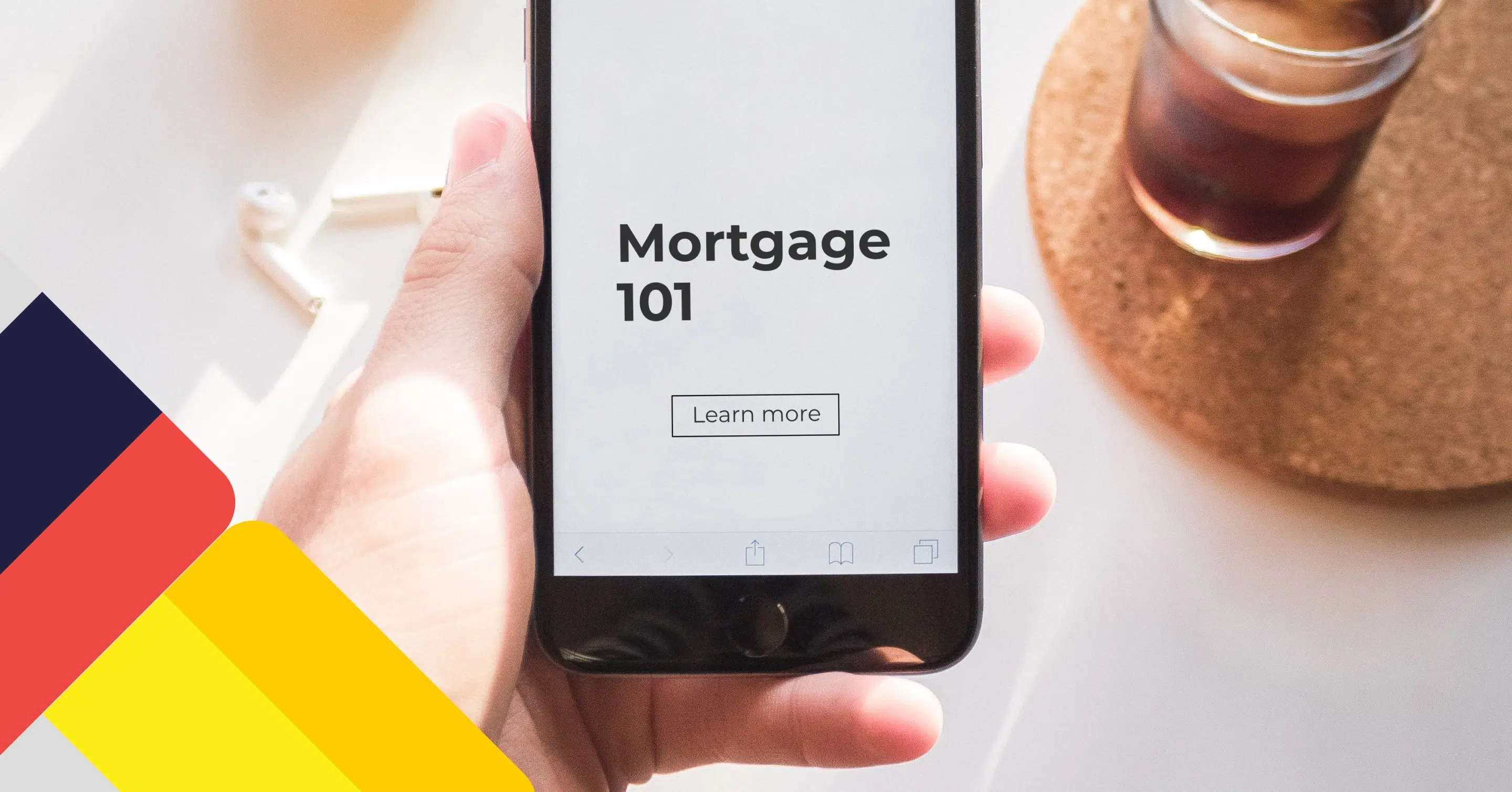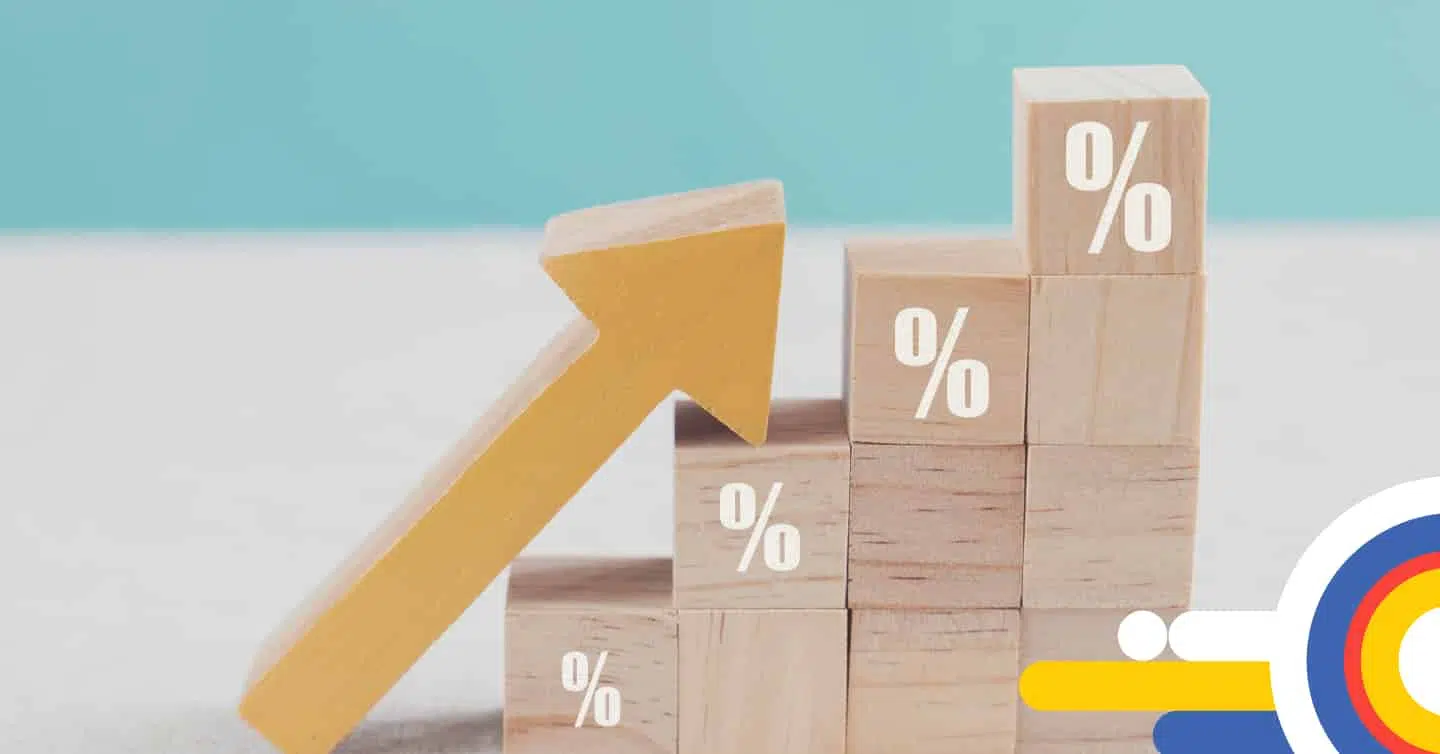Home Buying #Mortgage Basics #Real Estate
Home Buying #Mortgage Basics #Real Estate
Income Needed to Get a Mortgage in Canada
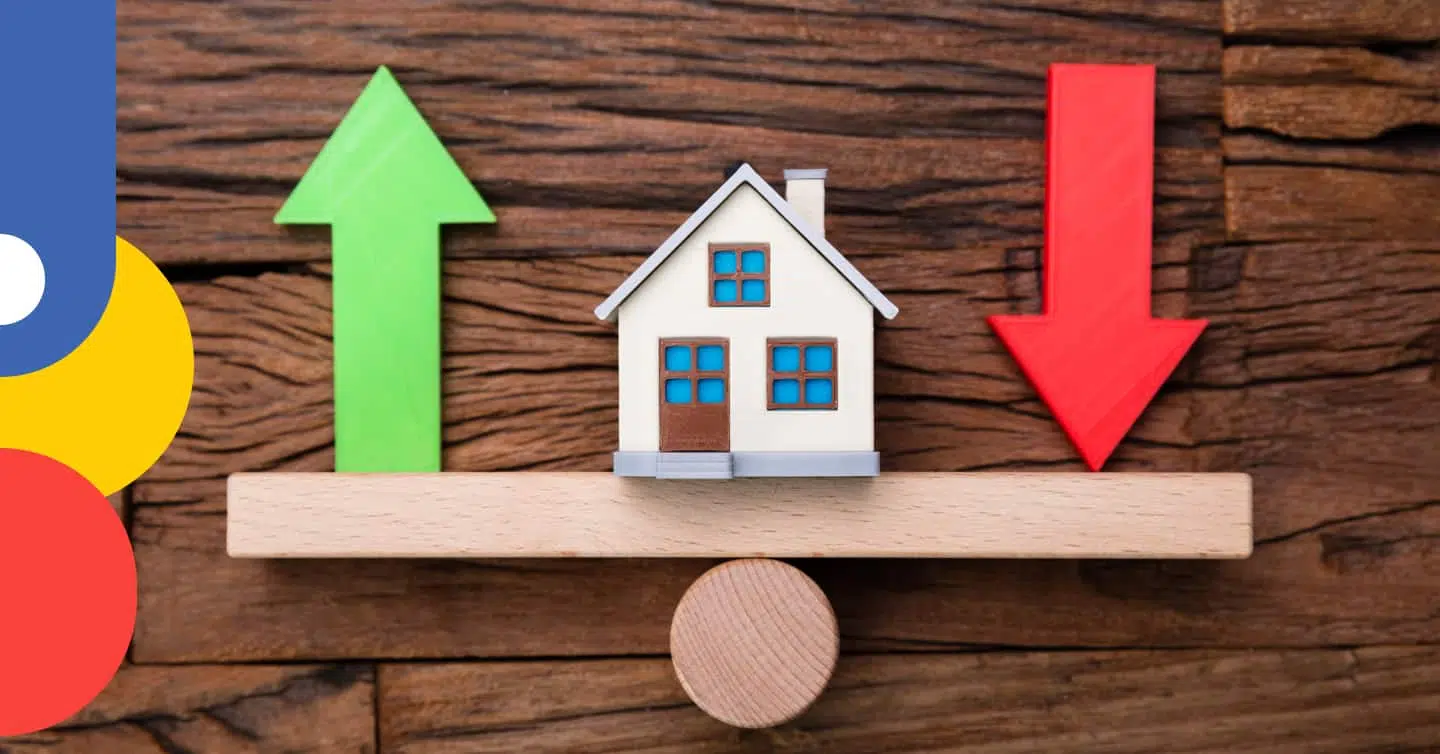
Table of contents
The Bank of Canada’s recent rate adjustments have transformed housing affordability nationwide in today’s evolving economic landscape. This guide breaks down current income requirements for securing mortgage loans in various Canadian regions and cities, helping you understand how these economic shifts affect home affordability. We’ll examine critical factors like loan-to-value (LTV) ratios, debt service requirements, amortization period considerations, and the latest mortgage stress test implications for Canadian borrowers.
Key Takeaways
- Recent adjustments in Bank of Canada rates mean Canadians typically need an income of 3.5 to 4 times their mortgage amount with a 20% downpayment.
- Income requirements vary widely across provinces, with Newfoundland having the lowest required income and Vancouver having the highest.
- Your type of mortgage—whether fixed or variable rate—can significantly impact the income needed to qualify, especially with the higher stress test rates in place.
Qualifying for a Mortgage in Canada
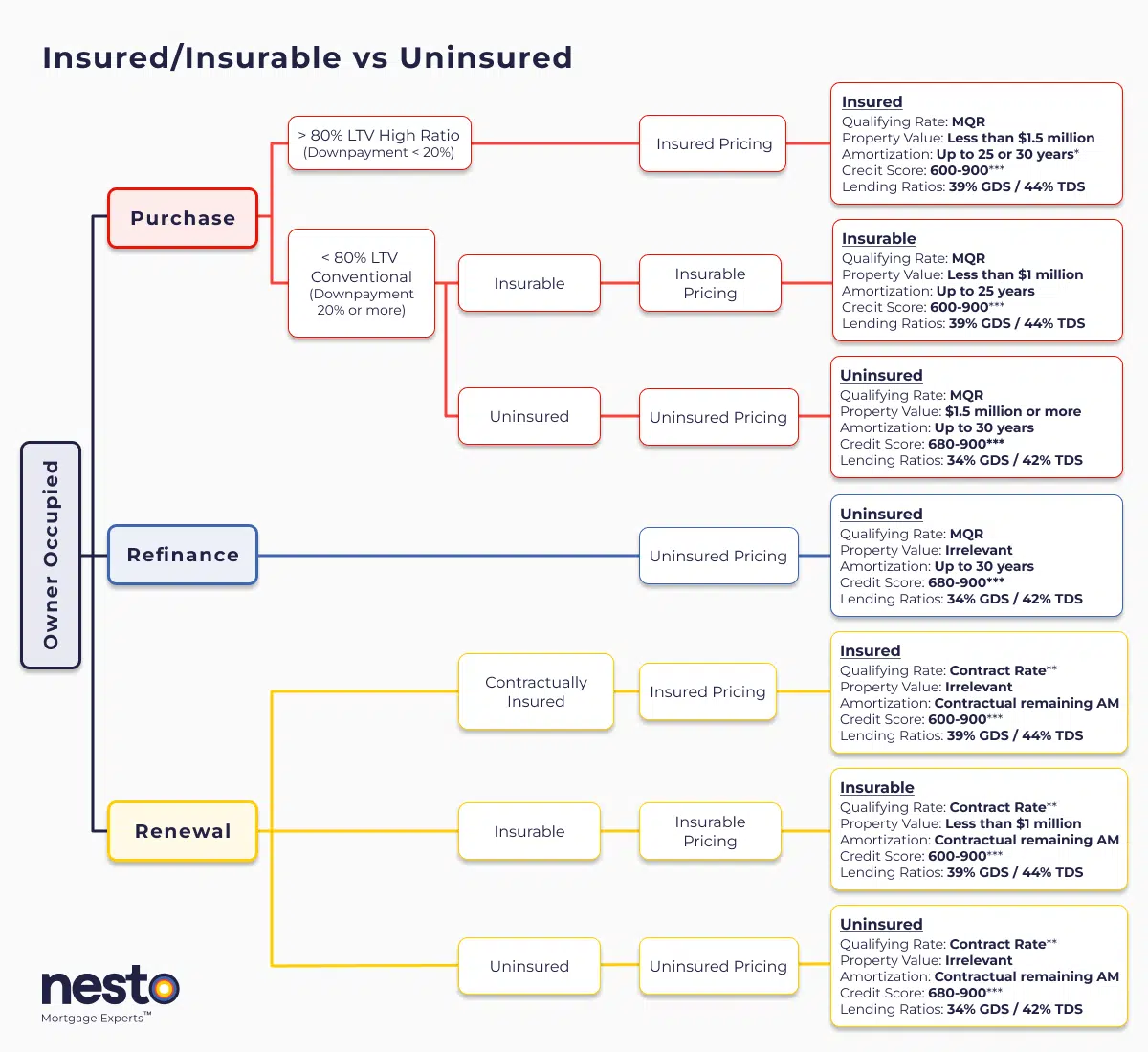
Details
*30-year amortizations on insured purchases are limited to first-time homebuyers (FTHBs) or anyone purchasing newly built homes.
**Qualified at contract rate at renewal only if there are no increases to contractually remaining amortization or remaining balance, and the mortgage is being transferred from a federally regulated lender as outlined by the Department of Finance (DOF) as a straight switch. The Minimum Qualifying Rate (MQR) requirements have been amended by the Office of the Superintendent for Financial Institutions (OSFI). It will be used to qualify all mortgages used for purchases and refinances. The MQR does not apply to renewals if the mortgage is renewed with the current lender or switched from a federally regulated lender.
***A credit score of 600 or 650 is allowable based on the mortgage insurer, and if there is a secondary applicant with a credit score of 680 or above. Lenders may scale debt service ratios (GDS/TDS) based on applicant(s) credit score(s) or reason for purchase/renewal (primary residence vs rental property). If one applicant on a joint mortgage has a credit score below 680, the lender may apply lending ratios as low as 32% GDS and 40% TDS. All criteria in the chart above apply to an owner-occupied primary residence mortgage with nesto.
Contractually insured mortgages are initially mortgage default insured by the borrower at the time of purchase and have not been refinanced or changed in any way that increases their remaining contractual amortization or mortgage balance. These insured mortgages are also known as high-ratio mortgages. In contrast, insurable and uninsured terms apply to conventional mortgages that are back-end bulk portfolio insured (typically lender-paid) or not.
New Purchase Qualifying Rates
Insured home purchases may be qualified using our lowest fixed rate, which will be the greater of 5.25% or
Insured home purchases may be qualified using our lowest variable rate, which will be the greater of 5.25% or
Insurable home purchases may be qualified using our lowest fixed rate, which will be the greater of 5.25% or
Insurable home purchases may be qualified using our lowest variable rate, which will be the greater of 5.25% or
Uninsured home purchases may be qualified using our lowest fixed rate, which will be the greater of 5.25% or
Uninsured home purchases may be qualified using our lowest variable rate, which will the greater of 5.25% or
Renewal (Switch or Transfer) Qualifying Rates
An insured mortgage may be qualified for renewal using the contract rate, which could be on our lowest fixed or variable insured rates, currently at
An insurable mortgage may be qualified for renewal using the contract rate, which could be on our lowest fixed or variable insurable rates, currently at
An uninsured mortgage may be qualified for renewal using the contract rate, which could be on our lowest fixed or variable uninsured rates, currently at
Loan-To-Value (LTV) Ratios and Qualifying Rates
Higher loan-to-value (LTV) ratios for insured mortgages remain beneficial in the current market, allowing you to access lower qualifying rates. However, higher interest rates mean borrowers must meet stricter income and credit score standards.
Understanding Debt Service Ratios
Debt service ratios, also known as debt-to-income ratios, gross debt service (GDS) and total debt service (TDS) ratios, are critical as borrowers face higher qualifying standards:
- Adjusted Ratios for Insured and Uninsured Mortgages: Insured mortgages allow up to 39% GDS and 44% TDS, while uninsured typically require lower ratios.
Focus on Financial Health: With higher interest rates, managing monthly mortgage payments within one’s financial capacity is essential.
How Do You Qualify for a Mortgage in Canada?
To qualify for a mortgage, you must pass a stress test to prove you can handle higher interest rates, which applies to all borrowers, even without mortgage default insurance. Lenders confirm you can manage your mortgage at an elevated rate, known as the minimum qualifying rate. The minimum qualifying rate (MQR) is the greater of the contracted rate plus 2% or 5.25%. However, when an insured mortgage (borrowers paid for the insurance) is transferred or switched between lenders at renewal, it will not be stress tested and is qualified at the contract rate.
Mortgage Default Insurance Requirements
Mortgage default insurance is mandatory for downpayments under 20%, impacting your mortgage qualifying amount and monthly costs. Default insurance often applies to loan amounts with higher LTV ratios, making high-ratio mortgages more affordable. Due to amortization limitations, these mortgages require a smaller downpayment despite having a higher monthly payment.
| Loan-to-Value | Premium (25-year Amortization) | Premium (30-year amortization) |
|---|---|---|
| 80.01% to 85% | 2.80% | 3.00% |
| 85.01% to 90% | 3.10% | 3.30% |
| 90.01% to 95% | 4.00% | 4.20% |
Region-Specific Income Requirements & Monthly Updates
Income requirements and purchase prices vary by location:
- Major cities like Toronto and Vancouver have higher income requirements based on property values and interest rate changes.
- Cities like Montreal are more affordable but show slight increases in required income.
Month-Over-Month Change in Income Required for Mortgages in Canadian Provinces
In some Canadian provinces, average home prices and the income required to qualify for a mortgage on an average-priced home have changed compared with last month.
Calculations are based on a mortgage with a 25-year amortization, a 20% downpayment, a provincially averaged property tax rate, and $100 for monthly heating costs. Home prices are sourced from the most recent CREA report.
Year-Over-Year Change in Income Required for Mortgages in Canadian Provinces
In some Canadian provinces, average home prices and the income required to qualify for a mortgage on an average-priced home have changed compared with last year.
Calculations are based on a mortgage with a 25-year amortization, a 20% downpayment, and a provincially averaged property tax rate, including $100 for monthly heating costs. Home prices are sourced from the most recent CREA report.
Month-Over-Month Change in Income Required for Mortgages in Canadian Cities
In some Canadian cities, average home prices and the income required to qualify for a mortgage on an average-priced home have changed compared with last month.
Calculations are based on a mortgage with a 25-year amortization, a 20% downpayment, and a provincially averaged property tax rate. They include $100 for monthly heating costs. Home prices are sourced from the most recent CREA report.
Year-Over-Year Change in Income Required for Mortgages in Canadian Cities
In some Canadian cities, average home prices and the income required to qualify for a mortgage on an average-priced home have changed compared with last year.
Calculations are based on a mortgage with a 25-year amortization, a 20% downpayment, and a provincially averaged property tax rate, including $100 for monthly heating costs. Home prices are sourced from the most recent CREA report.
Required Income for Average-Priced Homes in Canada
Based on the latest stress test requirements over a 25-year amortization, Canadians with a 20% downpayment need an income between $135,677 and $142,659 to buy Canada’s average-priced home at today’s fixed and variable rates, respectively, in May 2025.
Moreover, the income required to purchase a home in Newfoundland (at $59,970) is quite different from the income needed to buy a home in Vancouver (at $287,083).
However, an insured mortgage with a 10% downpayment and a 25-year amortization typically requires a lower income threshold than an uninsured mortgage financing due to higher uninsured mortgage rates.
Income Needed to Buy an Average-Price Home in Canada on an Insured Fixed Rate
Qualifying on an insured rate with a 10% downpayment over a 25-year amortization:
Income Needed to Buy an Average-Price Home in Canada on an Uninsured Fixed Rate
Qualifying on an insured rate with a 20% downpayment over a 30-year amortization:
How Much Do I Need to Make to Afford the Average Priced Home in Quebec?
Compare the income you need to purchase the average-priced home in Québec or some of its large cities and regions, including Montréal and Québec City.
How Much Do I Need to Make to Afford the Average Priced Home in Ontario?
Compare the income you need to purchase the average-priced home in Ontario or some of its large cities, including Toronto and Mississauga.
How Much Do I Need to Make to Afford the Average Priced Home in Alberta?
Compare the income you need to purchase the average-priced home in Alberta or some of its large cities, including Calgary and Edmonton.
How Much Do I Need to Make to Afford the Average Priced Home in British Columbia?
Compare the income you need to purchase the average-priced home in Alberta or some of its large cities, including Vancouver and Victoria.
How Much Do I Need to Make to Afford the Average Priced Home in the Prairie Provinces?
Compare the income you need to purchase the average-priced home in the Prarie provinces or some of their large cities, including Saskatoon and Winnipeg.
How Much Do I Need to Make to Afford the Average Priced Home in the Maritime Provinces?
Compare the income you need to purchase the average-priced home in the Prarie provinces or some of their large cities, including Halifax and Moncton.
What Does the Average Income Buy You Across Canada?
Income Needed to Buy an Average-Priced Home in Different Provinces
There is no simple or blanket answer to the qualifying income amount across Canada, as each municipality in every province has its own municipal property tax rate, directly affecting the income needed to qualify.
Income Needed to Buy an Average-Priced Home in Canada’s Large Cities
There is no simple or blanket answer to the qualifying income amount across Canada, as each municipality’s property tax rate directly affects the income needed to qualify.
We’re curious…
How Much Can I Get on a Different Type of Mortgage?
Income Needed to Qualify for Mortgage on Our Insured Fixed Rate
Calculations are based on a mortgage with a 25-year amortization, a 20% downpayment, and a provincially averaged property tax rate, including $100 for monthly heating costs. Home prices are sourced from the most recent CREA report.
Income Needed to Qualify for Mortgage on Our Insured Variable Rate
Calculations are based on a mortgage with a 25-year amortization, a 20% downpayment, a provincially averaged property tax rate and $100 for monthly heating costs. Home prices are sourced from the most recent CREA report.
Income Needed to Qualify for Mortgage on Our Uninsured Fixed Rate
Calculations are based on a 30-year amortization mortgage, a 20% downpayment, a provincially averaged property tax rate and $100 monthly heating costs. Home prices are sourced from the most recent CREA report.
Income Needed to Qualify for Mortgage on Our Uninsured Variable Rate
Calculations are based on a mortgage with a 25-year amortization, a 20% downpayment, a provincially averaged property tax rate, and $100 for monthly heating costs. Home prices are sourced from the most recent CREA report.
Income Needed to Qualify for Common Mortgage Balances
How Much Income Can Qualify for a $100,000 Mortgage?
How much income do you need to qualify for a $100,000 mortgage in Canada?
Qualifying on an insured rate with a 10% downpayment over a 25-year amortization:
Qualifying on an insured rate with a 20% downpayment over a 30-year amortization:
How Much Income Can Qualify for a $200,000 Mortgage?
How much income do you need to qualify for a $200,000 mortgage in Canada?
Qualifying on an insured rate with a 10% downpayment over a 25-year amortization:
Qualifying on an insured rate with a 20% downpayment over a 30-year amortization:
How Much Income Can Qualify for a $300,000 Mortgage?
How much income do you need to qualify for a $300,000 mortgage in Canada?
Qualifying on an insured rate with a 10% downpayment over a 25-year amortization:
Qualifying on an insured rate with a 20% downpayment over a 30-year amortization:
How Much Income Can Qualify for a $400,000 Mortgage?
How much income do you need to qualify for a $400,000 mortgage in Canada?
Qualifying on an insured rate with a 10% downpayment over a 25-year amortization:
Qualifying on an insured rate with a 20% downpayment over a 30-year amortization:
How Much Income Can Qualify for a $500,000 Mortgage?
How much income do you need to qualify for a $500,000 mortgage in Canada?
Qualifying on an insured rate with a 10% downpayment over a 25-year amortization:
Qualifying on an insured rate with a 20% downpayment over a 30-year amortization:
How Much Income Can Qualify for a $600,000 Mortgage?
How much income do you need to qualify for a $600,000 mortgage in Canada?
Qualifying on an insured rate with a 10% downpayment over a 25-year amortization:
Qualifying on an insured rate with a 20% downpayment over a 30-year amortization:
How Much Income Can Qualify for a $700,000 Mortgage?
How much income do you need to qualify for a $700,000 mortgage in Canada?
Qualifying on an insured rate with a 10% downpayment over a 25-year amortization:
Qualifying on an insured rate with a 20% downpayment over a 30-year amortization:
How Much Income Can Qualify for a $800,000 Mortgage?
How much income do you need to qualify for an $800,000 mortgage in Canada?
Qualifying on an insured rate with a 10% downpayment over a 25-year amortization:
Qualifying on an insured rate with a 20% downpayment over a 30-year amortization:
How Much Income Can Qualify for a $900,000 Mortgage?
How much income do you need to qualify for a $900,000 mortgage in Canada?
Qualifying on an insured rate with a 10% downpayment over a 25-year amortization does not apply on properties valued at $1 million or more:
Qualifying on an insured rate with a 20% downpayment over a 30-year amortization:
How Much Income Can Qualify for a $1,000,000 Mortgage?
Qualifying on an insured rate with a 10% downpayment over a 25-year amortization does not apply on properties valued at $1 million or more:
Qualifying on an insured rate with a 20% downpayment over a 30-year amortization:
Frequently Asked Questions (FAQs) on Mortgage Affordability
What Salary Do I Need to Buy a Home in Canada Today?
Today’s mortgage income requirements depend on interest rates, purchase prices, property taxes, and heating costs. Consult a mortgage professional or a mortgage expert at nesto for personalized guidance.
Why Are Mortgage Payments Rising?
Higher interest rates mean increased monthly mortgage payments , even on new fixed-rate mortgages. Many borrowers now opt for 30-year amortizations to lower their payments to mitigate rising costs, although longer amortizations will increase total interest costs.
Why Are Variable Mortgage Payments Not Reducing?
Variable-rate mortgage (VRM) payments do not change, even as the Bank of Canada lowers policy rates. As such, when interest rates rise, more of the payment goes to the interest portion of the mortgage; when interest rates fall, more of the payment goes to the principal.
During inflationary pressures when interest rates rise rapidly, VRMs may hit their trigger rate or trigger point; at this point, the payment will mainly cover the unpaid interest and any ballooned or original mortgage principal due. A likely reason why many Canadians who took out VRMs in 2021 may be noticing that their payments have not reduced as quickly as expected.
By contrast, adjustable-rate mortgage (ARM) payments adjust monthly with rate changes, reducing the principal more consistently when rates fall.
How Much Income Qualifies for a $400,000 Mortgage?
To qualify for a $400,000 home loan, Canadians generally need an income between $96,038 and $100,933, factoring a 10% downpayment with today’s qualifying rates.
As of July 15, 2025, our lowest 5-year fixed mortgage rate is
Final Thoughts
Navigating Canada’s housing market, whether buying your first home or planning an upgrade, staying current on income requirements, debt service ratios, and interest rate changes will help you make confident decisions. Understanding Canada’s mortgage landscape is vital in today’s economy.
Partnering with a mortgage expert can simplify this journey—reach out to nesto’s experienced team to explore today’s options and make the right choice for your financial future.
Why Choose nesto
At nesto, our commission-free mortgage experts, certified in multiple provinces, provide exceptional advice and service that exceeds industry standards. Our mortgage experts are non-commissioned, salaried employees who provide impartial guidance on mortgage options tailored to your needs and are evaluated based on client satisfaction and advice quality. nesto aims to transform the mortgage industry by providing honest advice and competitive rates using a 100% fully digital, transparent, seamless process.
nesto is on a mission to offer a positive, empowering and transparent property financing experience – simplified from start to finish.
Contact our licensed and knowledgeable mortgage experts to find your best mortgage rate in Canada.
EXPLANATIONS
Interest Rates
Property Values
Home Price Index
Property Types
Property Ownership Classes
Strata Insurance
Rental Values
Qualifying Criteria
Professional Titles
Mortgage Experts
Interest Rates
Qualified using nesto’s fixed 5-year insured and uninsured rates as advertised on our website. For today, Tuesday, July 15, 2025, our example calculations are qualified on our lowest rates, which may or may not apply to your unique financing situation or long-term goals. Insured fixed-rate mortgages will be qualified at
The average rates are calculated based on the advertised rates of the six biggest lenders in Canada. The six biggest lenders are the chartered banks Toronto-Dominion Bank (TD), Royal Bank of Canada (RBC), Bank of Montréal (BMO), Bank of Nova Scotia (BNS), Canadian Imperial Bank of Commerce (CIBC), and National Bank of Canada (NBC). We may also display a similar average with the inclusion of Desjardins, Tangerine, First National Financial (FN) and nesto to round out Canada’s 10 biggest mortgage lenders. The averages shown may be further broken down between insured and conventional rates.
We appreciate your patience and understanding and encourage you to email us at website@nesto.ca with information that needs correction, along with your sources.
Property Values
Home values collected from CREA or QPAREB are those presented as the composite benchmark or average prices for each city/province/region unless specified. They may be interchangeably called average home prices, though an average price may not be available for many regions outside Quebec.
MLS® Home Price Index (HPI)
The MLS® Home Price Index (HPI) is a real estate price index compiled by the Canadian Real Estate Association (CREA) that tracks the price of homes in your neighbourhood. It’s a quick way for Canadians to compare home prices in different parts of Canada and between different periods without having to factor in the unique characteristics of a particular property.
While market prices can vary from one month to the next based on seasonal factors, the Home Price Index (HPI) provides a more consistent view and tracks price trends over an extended period. The Home Price Index (HPI) is updated annually in May to reflect changes in real estate markets.
MLS® HPI is the most comprehensive and precise way to track a neighbourhood’s home price level and trends. MLS HPI uses over 15 years of data from the MLS® System and advanced statistical models to create a “typical” home based on the characteristics of homes purchased and sold. This benchmark home is tracked across all Canadian neighbourhoods and various types of homes.
Property Types
Detached homes, also known as single-family homes, are residential properties that stand alone and are not connected to other buildings. They are legal single residential units on their own parcel of land and have a separate title.
Semi-detached homes are characterized by their unique architectural design. Two houses are built side by side and share a common wall. Although sharing a building, semi-detached homes have their own parcel of land and separate legal titles.
Townhouses are residential dwellings typically characterized by narrow, tall structures, often sharing walls with neighbouring units. Although they may share yards or common elements with their neighbours, townhouses will have separate legal titles from any adjoining building. Townhouses can be purchased as freehold or leasehold within a condo or strata and may come with their own land parcel. Townhouses can be part of a low-rise or high-rise building.
Condo apartments, also known as condominiums, are residential properties that combine elements of apartments and individual homes. It is a unit within a larger building or complex owned by an individual who also shares ownership of common areas and amenities with other residents. Condo apartment owners have legal ownership of their units and can modify them within the guidelines set by the condominium association. Unlike a townhouse, condos do not offer exclusive use of outdoor space unless they come with a balcony or terrace. Condos can be part of a low-rise or high-rise building.
Plexes or multiplexes are unique residential buildings constructed into 2 to 6 units within a single structure. Traditionally, they have been designed as low-rise residential buildings where any unit is accessible via an external entrance with higher floors connected by staircases. Each unit will have a separate registration and title but may share common elements and co-ownership fees with the other multiplex owners. Plexes are common in Québec and older parts of Toronto.
Property Ownership Classes
A freehold is a type of property ownership where an individual or entity has complete and indefinite ownership rights over a property and its parcel of land. Common freehold property types include detached houses, semi-detached houses, farms, and townhouses, which are not part of condominium corporations.
A condominium or condo is a distinct type of property class that combines apartment living and individual homeownership elements. In a condominium, individual units are owned by the residents, while the common areas and amenities are shared among all the unit owners. This type of ownership gives you rights to your specific unit and some rights and responsibilities to the common areas, such as the hallways, elevators, garage, pool and rooftop patios.
A leasehold is a legal arrangement where a person or entity holds the right to use and occupy a property for a specific period, typically through a lease agreement. In some cases, the leaseholder may own the building or unit and rent the land from the landowner (landlord).
Strata insurance
Strata insurance is insurance that a strata or condominium uses to cover damages to common areas, assets and liabilities to the strata. It can also include fixtures built or installed as part of the original construction of each unit, even though these may not be common structures. Strata insurance can cover the following:
- Buildings and structures on the strata’s property, including common areas such as the garage, roof, lobby, pool, etc.,
- Liabilities for any property damage or bodily harm due to an injury suffered on a strata property,
- Which also includes fixtures in the standard unit or part of the original make of each unit.
Strata insurance generally does not cover personal belongings and appliances in a condo unit. Damage caused by individual unit owners (e.g., water damage due to a unit owner’s negligence) is typically covered under personal condo insurance.
Rental Values
Our monthly or year-over-year rental averages are sourced from Urbanation’s monthly Rentals.ca National Rental Report.
Mortgage Qualifying Criteria
Insured qualifying criteria are limited to a 39% gross debt service (GDS) ratio and up to 25 years of amortization. For insured mortgage transaction calculations, we have used a 20% downpayment, unless otherwise indicated, in our examples and excluded any mortgage default insurance (CMHC) premium. Uninsured qualifying criteria are limited to a 35% gross debt service (GDS) ratio and up to 30 years of amortization. Our examples use a 20% downpayment for uninsured mortgage transaction calculations. Unless otherwise indicated, a $100 monthly heating cost is attributed to the total monthly stress-tested payment. Municipal tax rates are the most recently shown on the applicable municipality’s website (1% used as default when unavailable or for a region with an unspecified mill rate). Mortgage default insurance is not permitted on purchases that have valuations of $1 million or more, amortizations exceeding 25 years, or on refinance transactions.
Regulatory Titles
In Ontario (FSRA), mortgage brokers and agents serve as the middle person between borrowers and lenders, helping clients find the most suitable mortgage options for their financing situation. A Mortgage Agent works under the supervision of a Mortgage Broker and assists in the mortgage application process. A Mortgage Broker may also be responsible for compliance requirements for their brokerage or a team.
The provinces of Quebec (AMF) and Newfoundland (Digital & Government Service NL) both exclusively utilize the designation of Mortgage Broker as a licensing designation.
British Columbia (BCFSA) has two distinct roles within the mortgage industry: the Submortgage Broker and the Mortgage Broker. These positions have specific responsibilities and functions that contribute to the overall process of securing mortgages for clients. The Submortgage Broker works under the supervision of a licensed Mortgage Broker and assists in various tasks, such as gathering client information, completing paperwork, and liaising with lenders. The Mortgage Broker oversees the entire mortgage application process, including assessing client needs, finding suitable mortgage options, negotiating terms, and ensuring compliance with regulations.
In Alberta (RECA) and New Brunswick (FCNB), the distinction between a Mortgage Associate and a Mortgage Broker lies in their roles and responsibilities within the mortgage industry. A Mortgage Associate typically works under the supervision of a Mortgage Broker and assists in the mortgage application process gathering necessary documentation, and providing support to clients. A Mortgage Broker is licensed to independently negotiate and arrange mortgage loans on behalf of clients, offering a more comprehensive range of mortgage options and expertise in the field.
In Saskatchewan (FCAA) and Nova Scotia (Government of Nova Scotia, Business Licensing), there are distinct roles for both Associate Mortgage Brokers and Mortgage Brokers. The critical difference lies in their level of experience and licensing requirements. Associate Mortgage Brokers work under the supervision of a licensed Mortgage Broker and are in the early stages of their career. They may assist with gathering client information and preparing mortgage applications. Mortgage Brokers have obtained the necessary qualifications and licences to operate independently and provide mortgage services directly to clients. They have the authority to negotiate mortgage terms, advise clients, and facilitate the mortgage process from start to finish.
In Manitoba (MSC), a Salesperson is primarily responsible for promoting and selling products or services, while an Authorised Official holds the authority to make legally binding decisions on behalf of the organization. These roles have different levels of authority and expertise, with the Salesperson focusing on sales and the Authorised Official having broader decision-making powers and acting as the liaison between the brokerage and the regulator.
For a complete list of licensing terms in Canada, please see the Mortgage Broker Regulators’ Council of Canada (MBRCC) published list.
nesto Mortgage Experts
Titles such as mortgage broker, mortgage agent, submortgage broker, mortgage salesperson, or principal broker are provincially regulated licensing terms with educational requirements specific to each province. Although they may all commonly be referred to as mortgage brokers, in Ontario, where mortgage agents are used as a designation, mortgage brokers or principal brokers have additional responsibility for compliance and training mortgage agents.
Licensed mortgage professionals often use the industry norm of “mortgage broker,” “broker,” or “advisor” to refer to themselves. However, disclosure requirements for licensed mortgage professionals’ titles vary across each province in Canada. These disclosures require mortgage brokers to adhere to specific rules when using titles to represent their qualifications and expertise. The provinces have regulations and guidelines that govern the use of titles by mortgage brokers. These regulations aim to ensure transparency and protect consumers in the mortgage industry.
Ready to get started?
In just a few clicks, you can see our current rates. Then apply for your mortgage online in minutes!


